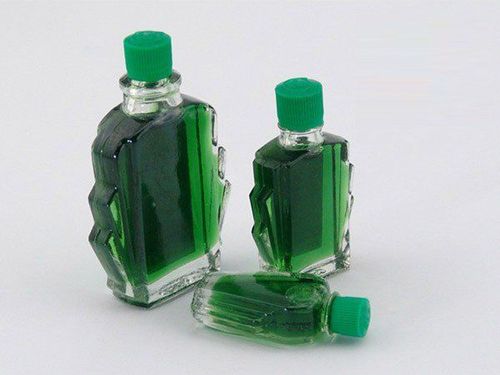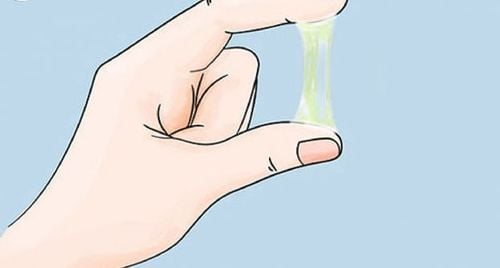This is an automatically translated article.
After giving birth, weaning is an important transition in motherhood. When you're ready to wean your baby, consider these simple strategies to make weaning "tearless" and smooth for both mother and baby.1. What is weaning for children?
At some point, the baby stops breastfeeding and gets all its nutrients from food sources other than breast milk, which means that the baby has been weaned.Weaning is necessary, but the process requires a lot of patience and takes a lot of time, depending on the age of the baby at weaning and the adjustment level from the child himself. The weaning experience is different for every baby. Weaning can be seen as a tearful goodbye to a child. Often mothers tend to love their children so they prolong the time they breastfeed, which is really not good.
2. When should we wean children?
You can choose appropriate weaning milestones such as waiting until your baby is a toddler (1 to 2 years old) or older to wean.Mothers also do not need to set a fixed date for weaning and starting solids unless both mother and baby are ready. The American Academy of Pediatrics recommends that mothers breastfeed for at least the first year of life. Regardless of whether relatives, friends or anyone mention the issue of weaning, it is only for reference purposes. There is no right or wrong time when it comes to weaning your baby. If mothers feel it is time to supplement their babies with nutrients from other foods, that is the most appropriate time to wean.

Không có thời điểm nào là đúng hoặc sai trong vấn đề cai sữa cho bé
3. How to wean a baby?
Weaning should be done gradually, regardless of the child's age. Experts advise mothers who intend to wean their children not to stop breastfeeding suddenly because that will make the baby feel really frustrated and uncomfortable. It's not the best way to end your baby's breastfeeding period.Moms can consider using one of the following ways to make weaning more “gentle” for their baby:
Skip a feed: Skip a feed to see if your baby is okay. what reaction. Instead, give your baby a bottle of formula with formula. Reducing the number of feedings over a few weeks will give your baby enough time to adjust to the changes. Besides, the milk supply in the mother's body will also gradually decrease without causing the breasts to become engorged or causing the breasts to become inflamed or infected. Shorten the length of each feed: Try to start weaning off your baby by shortening the length of time he breastfeeds. This means that if normally babies breastfeed for about five minutes, now shorten that time to four minutes, then three minutes.... Next, introduce solid foods with snacks. as healthy as unsweetened apple sauce or a cup of formula. Breastfeeding before bedtime is often more difficult to control time because it is easy for babies to cry and refuse to go to sleep. Delay and distract your baby: Try delaying your baby's feed and try to reduce the number of feedings per day and distract your baby with a song, a toy, or a story. Don't volunteer to breastfeed: Another way to wean your baby off is to slowly stop breastfeeding at various times of the day. Breastfeed only when the baby asks. Many mothers try to get their babies to suck when they cry, which makes weaning even more difficult. Don't let the weaning process happen too quickly for your baby: A toddler's tantrums, clinginess, anxiety, and other behaviors can be a sign that weaning is happening too quickly for them. baby's comfort. If your baby starts acting out of sorts, slow down the weaning process. There's no reason mothers should wean their babies when they're sick. Breastfeeding for another week or two is the best option for both of you.

Nên tiến hành cai sữa cho bé một cách từ từ, bất kể trẻ đang ở độ tuổi nào
4. What to do when the baby refuses to wean?
If moms have tried all sorts of ways to wean their babies to no avail, this may not be the time. Or at the time of weaning sick babies will want to breastfeed more often. In fact, breastfeeding is the best thing a mother can do when her baby is sick.In addition, if you find this is the right time to wean your baby, you can refer to some weaning tips for your baby such as:
Masquerade your mother's breasts: You can use lipstick, turmeric color, beets or stick tape on the nipples to disguise the mother's breasts. When the mother sees a change in the mother's breasts, the baby will no longer want to suckle. Use bitter medicine cloxit: It is a safe drug with a bitter taste. Mothers can crush the medicine with water and apply it to the mother's nipples. When the child sucks in and feels bitter, the child will spit it out and no longer want to suck on the mother's breast. Apply wind oil around the mother's chest: This is a relatively simple, common and effective way. When breast-feeding, babies will feel the pungent and spicy taste of oil and wind, so they don't dare to ask for nipples anymore.

Bôi dầu gió xung quanh ngực mẹ là phương pháp đơn giản giúp bé cai sữa
5. Take care of yourself when you stop breastfeeding
Mothers are often so concerned with their children when weaning that they forget to think about taking care of themselves. Weaning your baby slowly will also limit engorgement. If you have engorgement, try a hot pack to ease the discomfort.Most of the time deciding when to wean comes from the mothers themselves. It could be because they are planning their next pregnancy or simply because the pressure of work leaves them with less time to care for their baby. Whatever the reason, the weaning process should take place slowly, gently so that the baby can give up breastfeeding in a "tearless" way.
When children are weaned, parents also need to pay special attention to their child's diet to ensure adequate nutrition. It is possible to add lysine, essential micro-minerals and vitamins such as zinc, chromium, selenium, and B vitamins to help meet the needs of nutrients, aid digestion, and enhance nutrient absorption. help improve anorexia, help children eat well.
For more nutritional knowledge and child care for each age, parents should regularly visit the website vimec.com and make an appointment with the leading doctors, pediatric and nutrition experts of the National General Hospital. Vinmec when needing advice on children's health.













